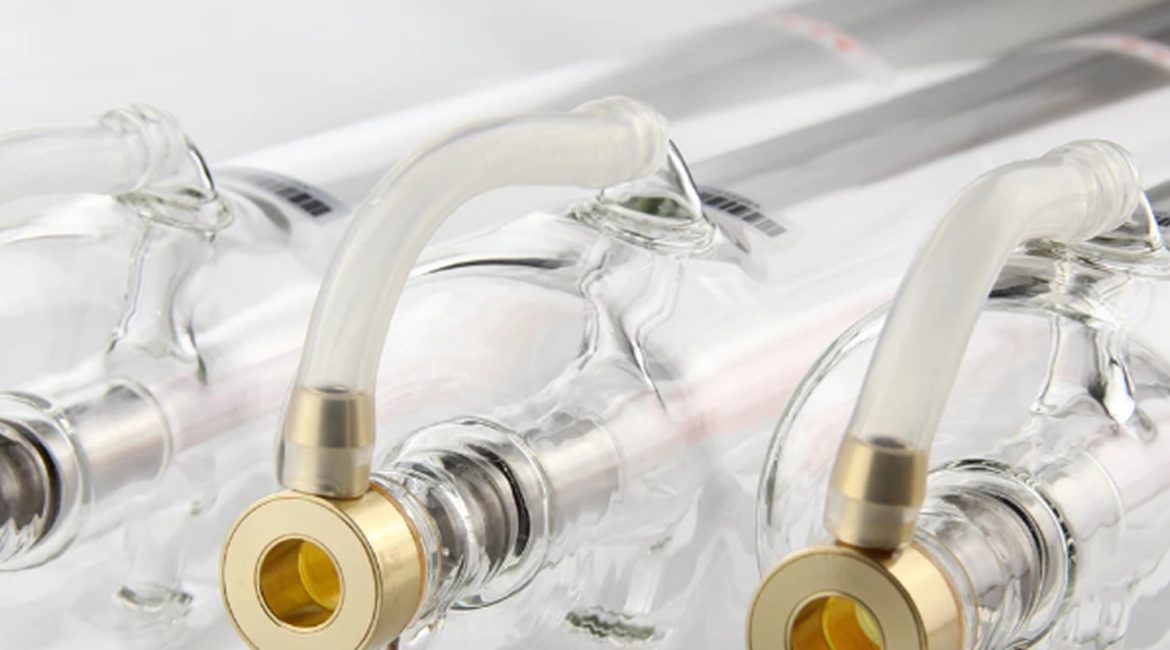CO2 laser tubes are widely used laser sources in industries and medicine. The core of a CO2 laser tube lies in its gas mixture, mainly including carbon dioxide (the lasing medium), nitrogen (to assist CO2 molecule excitation), and helium (for cooling and discharge stabilization). However, as a CO2 laser tube operates, the gas composition changes due to discharge reactions. Specifically, the carbon dioxide decomposes into carbon monoxide and oxygen. Consequently, this leads to a decrease in laser output power. For this reason, it is one of the main factors that ends the CO2 laser tube’s life.
Therefore, many people wonder: Since the gas “deteriorates,” can we simply refill the CO2 laser tube to “extend its life?”
From a theoretical and technical perspective, CO2 laser tube recycling through refilling is indeed possible. In fact, professional CO2 laser tube manufacturers or repair services offer such refilling services. The process generally involves first fully evacuating the residual gas from the old CO2 laser tube. Then, technicians thoroughly clean the tube cavity to remove decomposition products and impurities. After that, they refill it with a fresh CO2 gas mixture according to the original ratio. A CO2 laser tube treated this way can have its power restored to near-new condition. Moreover, the cost is much lower than purchasing a new CO2 laser tube, making it very attractive to users.
However, CO2 laser tube refilling isn’t without risks. Indeed, it may even bring potential hazards.
First, power and beam quality may become unstable. Although refilling can restore power in the short term, repeated or unprofessional refilling may not completely remove the impurities and sputtered electrode material adhering to the inner wall of the CO2 laser tube. These residues can contaminate the newly filled gas. As a result, they affect the stability and uniformity of subsequent discharges. This leads to increased laser output fluctuations and degraded beam quality. For applications requiring high-precision cutting or engraving, this instability is unacceptable.
Secondly, safety risks should not be ignored. The lifespan of a CO2 laser tube depends not only on the gas but also on other critical components such as its optical windows (lenses) and electrodes. Lenses may age or become damaged in long-term high-temperature and corrosive environments. Besides, electrodes are continuously consumed during discharge. If we simply replace the gas without inspecting and replacing these critical hardware components, the CO2 laser tube may fail due to seal failure, high-voltage leakage, or even optical element fracture when put back into use. Especially for high-voltage discharge CO2 laser tubes, any structural hidden danger can lead to equipment failure or even personal injury.
Finally, maintenance costs and frequency are also a concern. Refilling services from non-original manufacturers usually cannot guarantee the same lifespan as a new CO2 laser tube. Users may find that the power of a refilled CO2 laser tube decays much faster than that of a new one after a period of use. Consequently, this forces them to refill or repair it more frequently. In the long run, maintenance costs may be higher. Moreover, the downtime will be longer, affecting production efficiency.
In conclusion, CO2 laser tube refilling is a feasible technique. However, it is more like a “temporary solution” or an “economical choice.” When choosing this service, users must carefully weigh the short-term benefits and long-term risks. Furthermore, they should select an organization with professional technology and complete testing methods to ensure that the refilled CO2 laser tube can operate safely and stably.

